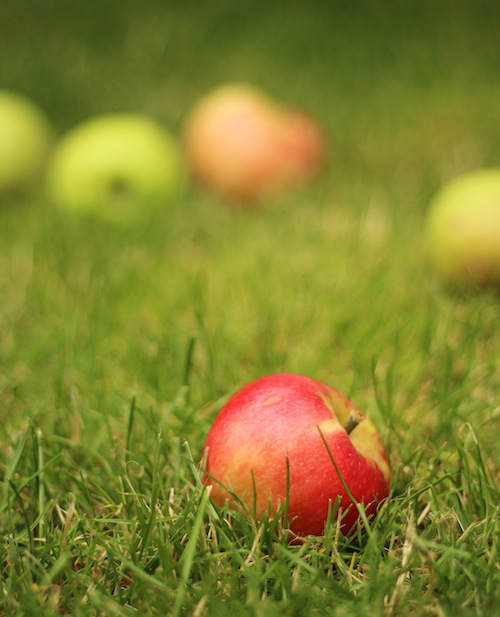For Café Europe - a cultural initiative held as part of Austria’s EU presidency in 2006 - Ireland offered scones, and France offered the Madeleine. While very different products, scones and Madeleines have some things in common – flour, sugar, butter, and social ambition. While both had relatively humble beginnings, they were adopted by high society – the scone becoming an essential part of ‘Afternoon Tea’, made fashionable by a rather peckish Anna Duchess of Bedford in the mid-nineteenth Century. The Madeleine (according to one account) was already a favourite at Versailles, adopted by the Court of Louis XV a century earlier. Both got a little lift from the invention of baking powder. There the similarity ends. Perhaps it's a lesson in "It's not what you've got, it's how you use it!"
In
Remembrance of Things Past, Marcel
Proust’s narrator famously has a foodgasm brought on by the Madeleine. He doesn’t mention scones.
For
24 foodgasm-inducing Madeleines you will need…
…
2 x 12-hole Madeleine tins (you’ll get away with 1, just let it cool between
bakes)
150g butter
3 eggs
130g caster sugar
a teaspoon of finely grated orange zest
1 teaspoon coriander seed, finely ground
the seeds from 2 fat green cardamom pods,
finely ground
¼ tsp salt
130g plain flour
¾ tsp baking powder
a little extra flour for dusting the cake tins
Method
In a
medium saucepan, melt the butter over a medium to high heat (use a light-coloured saucepan such as
stainless steel if possible as it allows you to see the colour change in the
butter that indicates it has reached the right point). Once melted, let it
continue to foam and splutter, swirling occasionally to make sure it is heating
evenly. As the foaming and spluttering dies down, the butter will continue to
darken from yellow, to golden, to toasty brown. The butter will also begin to
smell a little nutty. The milk solids in the butter will separate out and sink
to the bottom. Remove the pan from the hob and pour into a heatproof bowl or
jug to cool to room temperature, leaving as much of the milk solid residue
behind as possible (If you leave the melted butter in the pan, it will continue
to cook in the residual heat and may burn).
Remove
2 tablespoons of the melted butter right away – you’ll need this to brush the
cake tins later – cover and keep it at room temperature so that it remains
liquid.
Put
the eggs in a large bowl and add the sugar. Whisk until pale, pale yellow and has
thickened to the ‘ribbon’ stage – the whisk will leave a trail as you move it
through the mixture and when you lift the whisk, the batter will fall in a
ribbon and stay on the surface for a couple of moments before slowly
disappearing back into the mixture.
Add the salt, orange zest and ground spices. Trickle in the cooled butter, whisking all the while until incorporated into the batter.
 |
| From top left to right, you can see the colour change as you whisk the batter |
Add the salt, orange zest and ground spices. Trickle in the cooled butter, whisking all the while until incorporated into the batter.
Add
the baking powder to the flour and sift about one-third onto the surface of the
batter. Using a metal spoon such as a dessertspoon, gently fold the flour into the batter. Repeat twice more until you have
folded all the flour into the mixture.
Cover with cling film, pressing down lightly so that it is in contact with the surface of the batter.
Cover with cling film, pressing down lightly so that it is in contact with the surface of the batter.
Chill
in the refrigerator for at least an hour or overnight if possible.
When ready to bake, pre-heat the oven to 180°C.
Brush
the Madeleine tins lightly with the reserved melted butter and sprinkle lightly
with flour, tapping off the excess. Divide the batter evenly between the tins
filling no more than about three-quarters full (an ice cream scoop or piping
bag is good for even portioning). Don’t bother to spread the batter out to the
edges - gravity will do the work for you.
Transfer
to the pre-heated oven and bake for 8 to 10 minutes or until risen and golden
and spring back under the touch of a finger. If the God of Madeleines has been kind, they should have formed a ‘dromedary’
hump (which I always thought was a defect, but turns out to be Madeleine perfection – who knew!).
 |
| Don't bother spreading the batter to the edges - gravity will do the work for you! |
Remove
from the oven and leave in the tin for a minute or so before tipping gently out
of their shells onto a wire rack to cool. They freeze marvelously and are
restored to oven-fresh magnificence after about 12 seconds in the microwave. If
you are going to freeze them do so now, without their
sugar dusting.
If they are to be eaten now, once cool, dust with icing sugar and consume with a decent cup of tea or a glass of sticky dessert wine.
If they are to be eaten now, once cool, dust with icing sugar and consume with a decent cup of tea or a glass of sticky dessert wine.
You
could also dip them in good dark chocolate or white chocolate.
Pin It
 |
| A bit of quality control… baker's privilege ... |
































